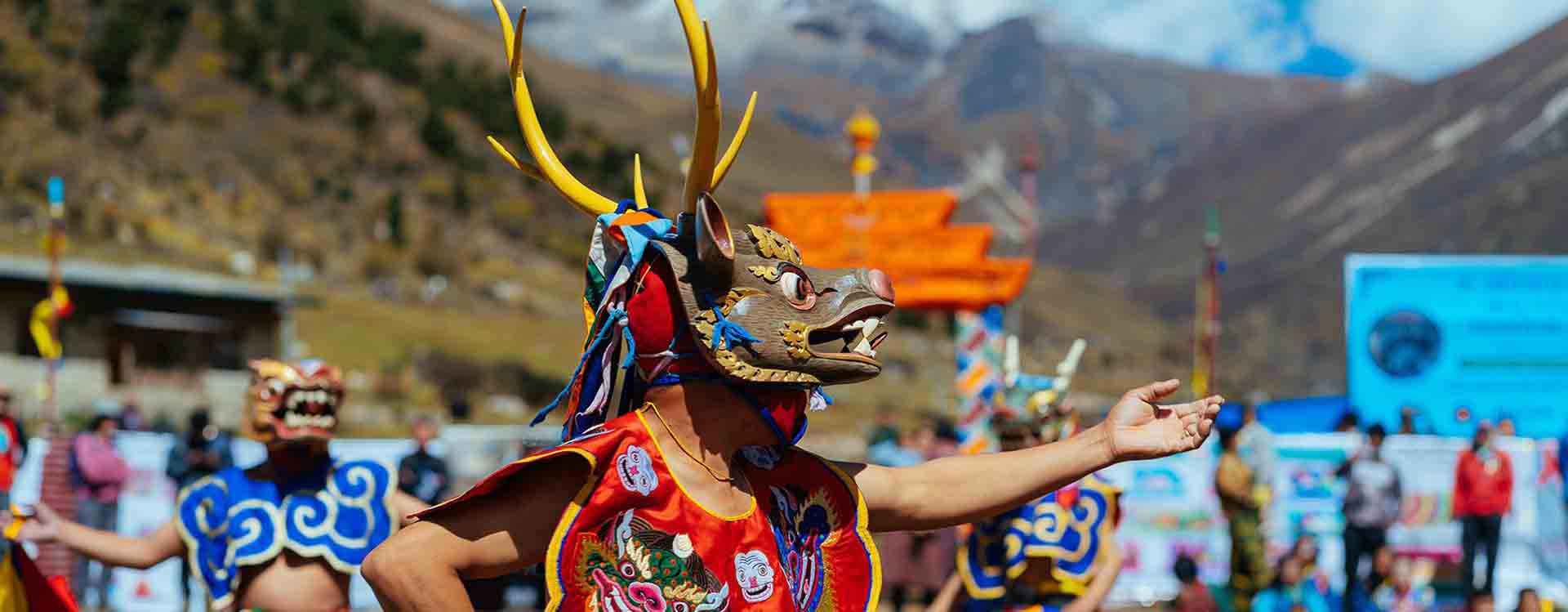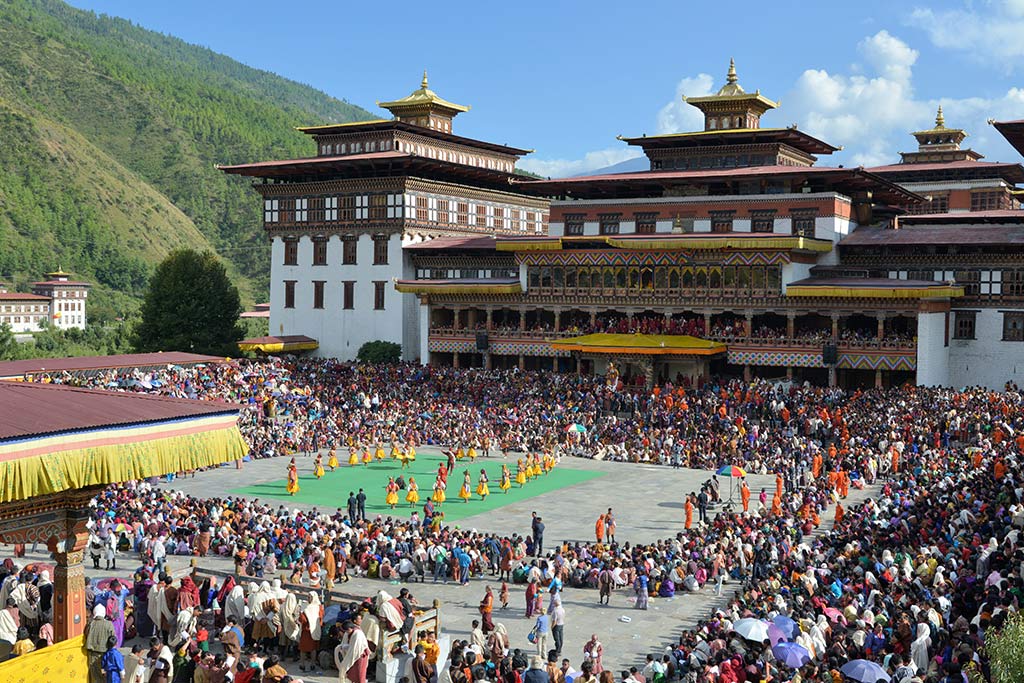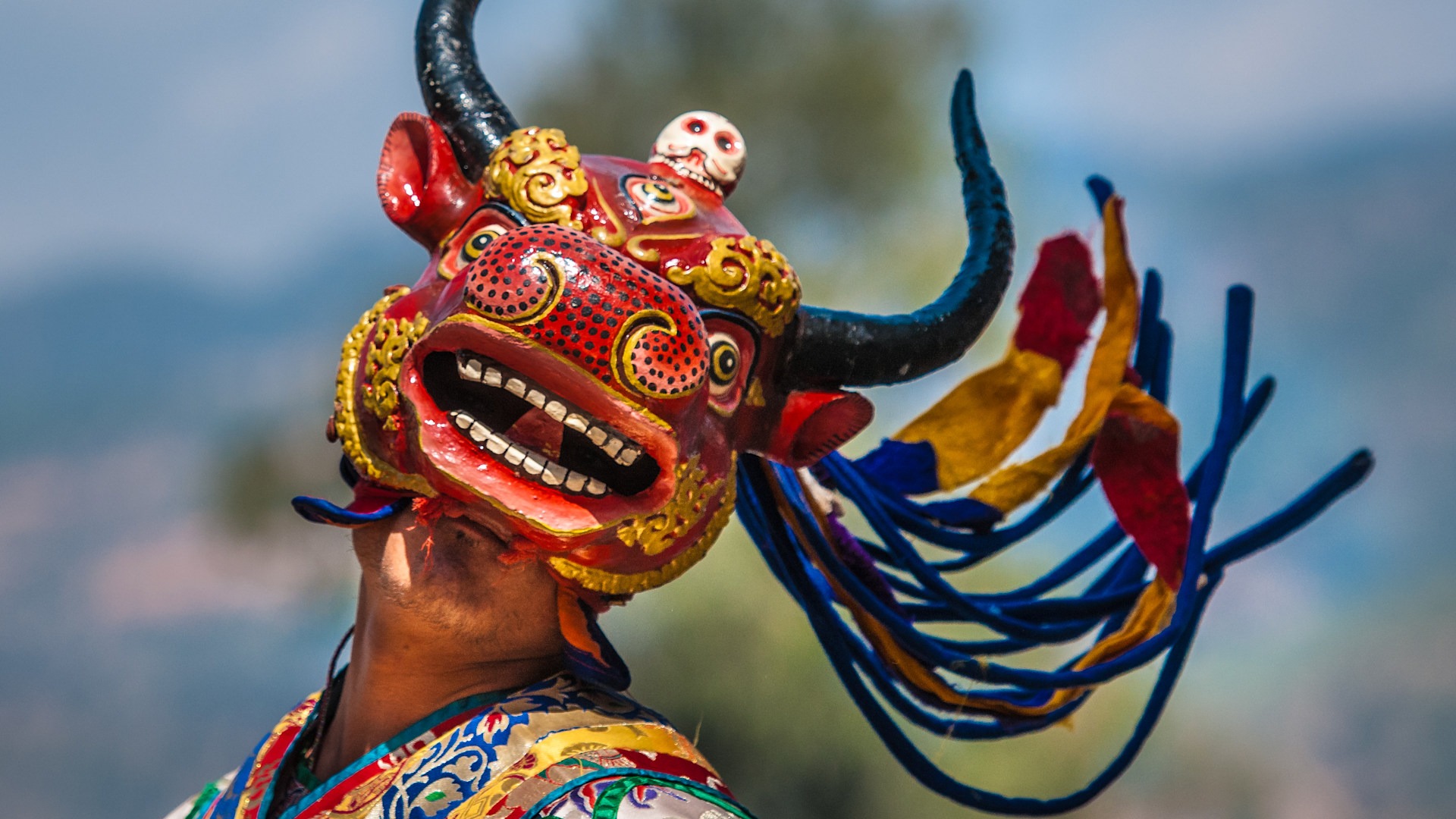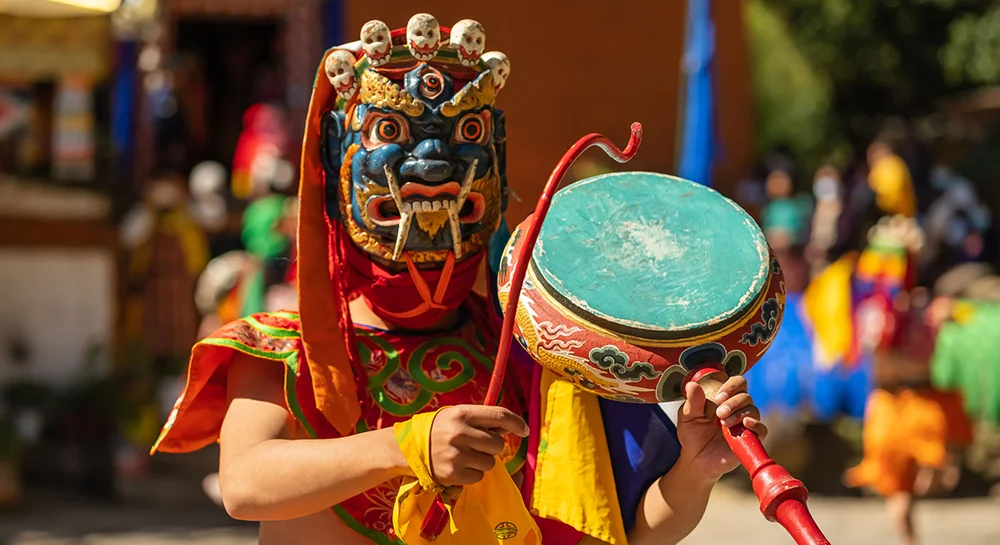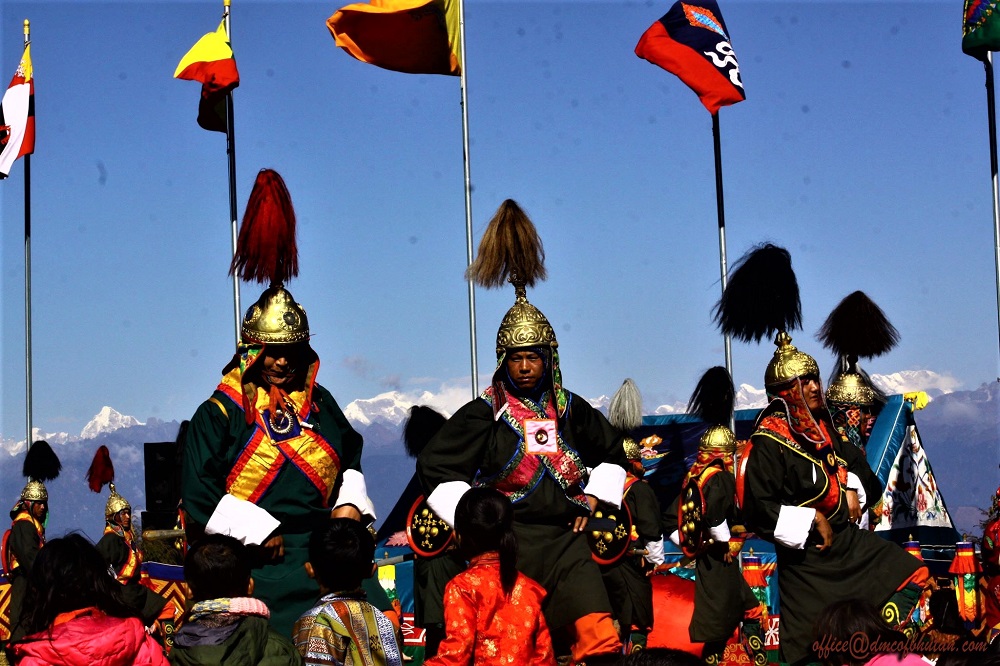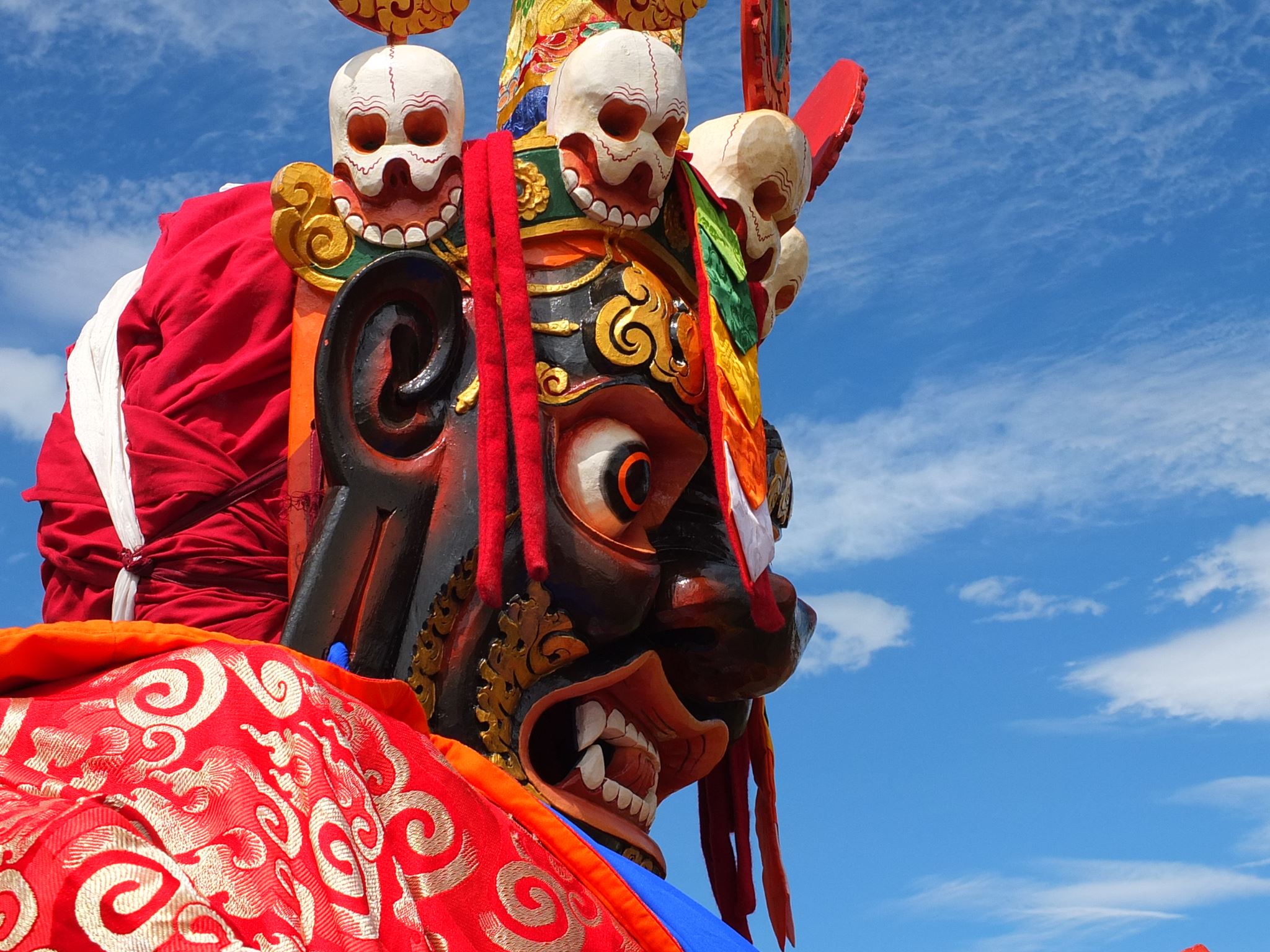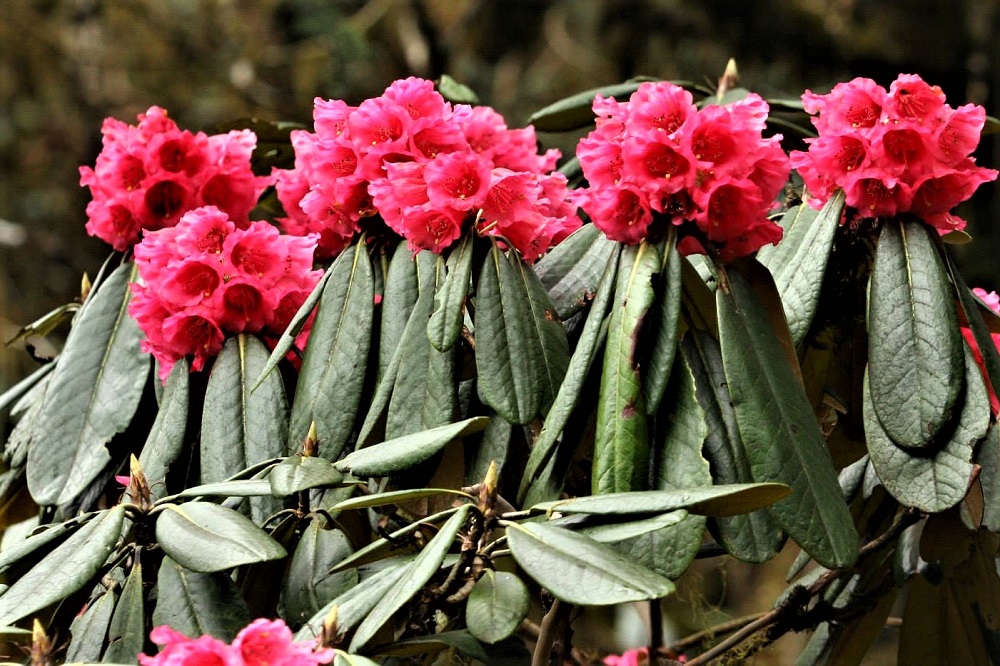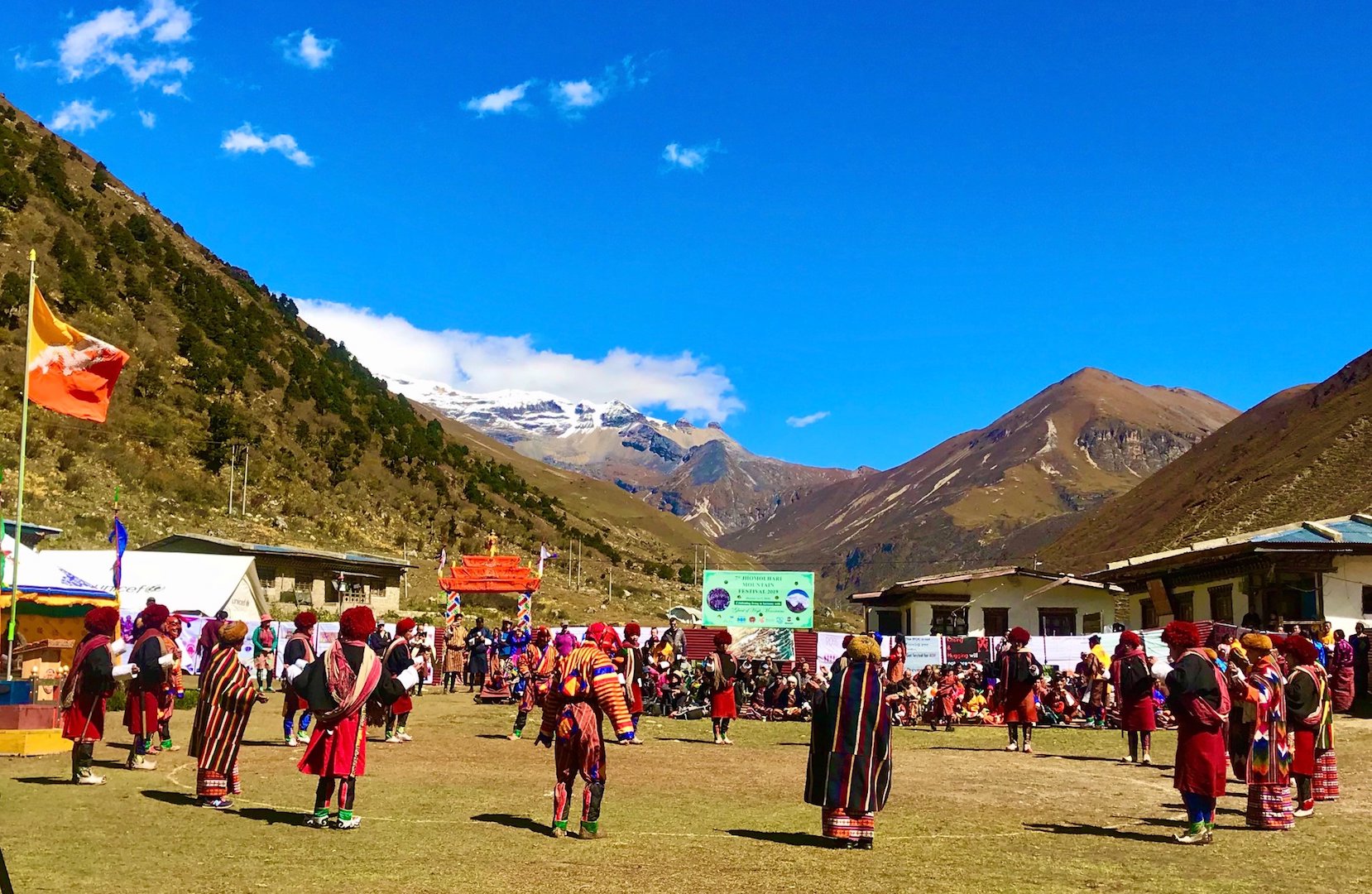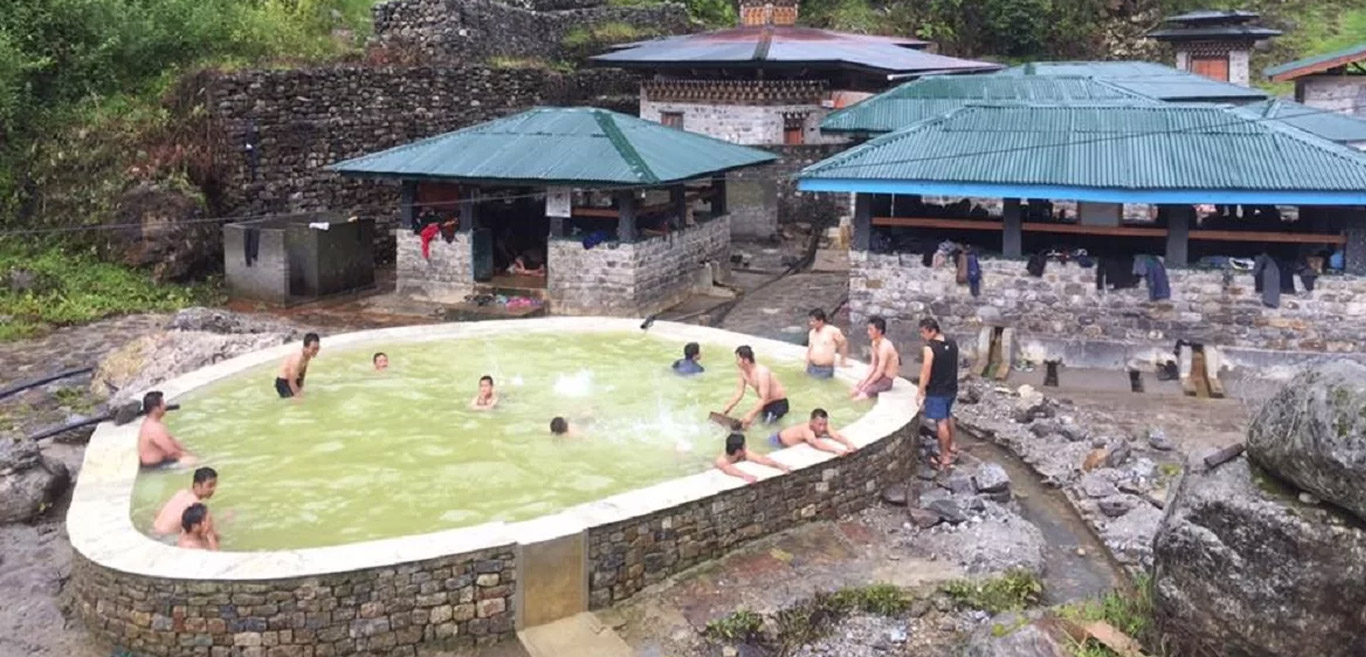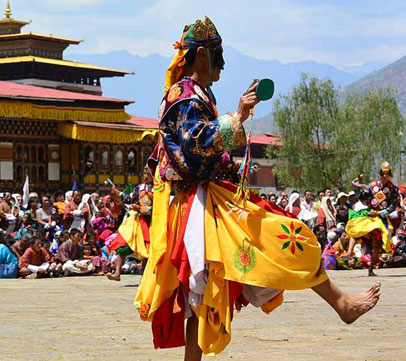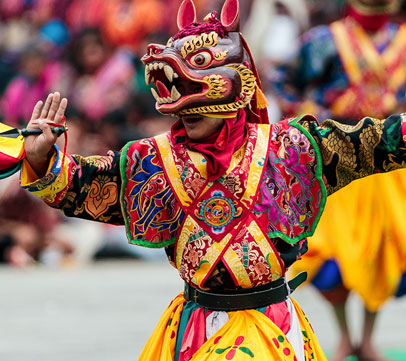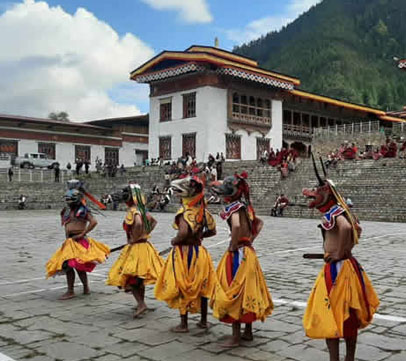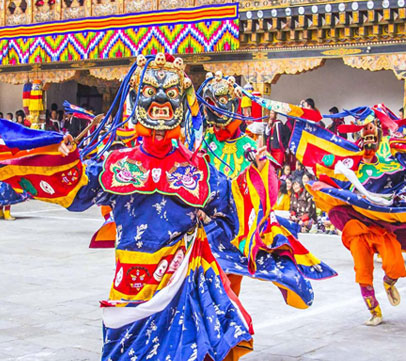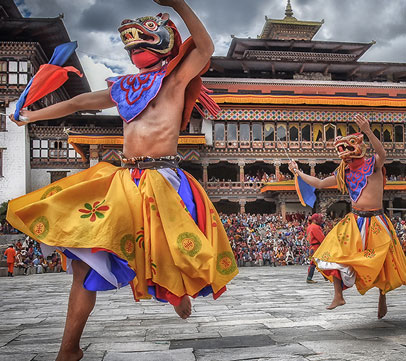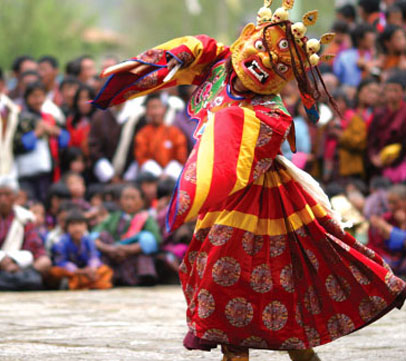Overview :
The Jhomolhari Mountain Festival is a unique blend of culture, nature, and adventure, held in the stunning highlands of Bhutan near Mount Jhomolhari (7,326m). This 8-day tour offers a rare opportunity to experience Bhutan’s vibrant traditions, breathtaking landscapes, and diverse wildlife while engaging with the local communities that live in harmony with nature.
Tour Highlights:
1. Witness the Jhomolhari Mountain Festival, a celebration of Bhutanese culture and conservation.
2. Trek through scenic valleys, alpine meadows, and pristine forests along the Jhomolhari Trek route.
3. Encounter rare wildlife, including the elusive snow leopard.
4.Visit iconic landmarks in Paro and Thimphu, including Tiger’s Nest Monastery.
5.Experience authentic Bhutanese hospitality in remote villages.
Itinerary:
Day 1: Arrival at Bagdogra – Transfer to Phuentsholing
- Arrive at Bagdogra Airport: You’ll touch down at Bagdogra Airport, your gateway to the eastern Himalayas.
- Transfer to Phuentsholing: The road journey from Bagdogra to Phuentsholing takes you through lush tea gardens and picturesque countryside, offering a glimpse of the natural beauty to come.
- Visit Zangto Pelri Lhakhang: This temple, nestled in Phuentsholing, is a peaceful sanctuary adorned with intricate Bhutanese artwork and offers a serene introduction to Bhutanese culture.
- Overnight in Phuentsholing: Accommodation options in Phuentsholing range from comfortable hotels to cozy guesthouses, providing a welcoming start to your Bhutanese
Day 2: Phuentsholing to Thimphu
- Complete immigration formalities: Crossing into Bhutan involves completing necessary immigration paperwork, which is typically handled efficiently.Drive to Thimphu through scenic landscapes: The journey traverses winding mountain roads and verdant valleys, with occasional stops to admire cascading waterfalls and panoramic vistas.
- Stop at Chuzom: Here, the confluence of the Thimphu and Paro rivers is marked by prayer flags fluttering in the breeze, offering a serene moment to appreciate Bhutan’s natural beauty.
- Explore Thimphu city: Bhutan’s capital blends tradition with modernity, where ancient D’zongs (fortresses) stand beside bustling markets and contemporary cafes, providing insight into Bhutan’s unique cultural fusion.
- Overnight in Thimphu: Accommodation in Thimphu ranges from boutique hotels to cozy lodges, ensuring a comfortable stay admits the capital’s charms.
Day 3: Thimphu Sightseeing
- Visit National Textile Museum: Discover Bhutan’s intricate weaving traditions and admire displays of colorful textiles, each telling a story of local craftsmanship and cultural heritage.
- See the Buddha Dordenma statue: Standing tall at 169 feet, this bronze statue of Buddha overlooks Thimphu Valley, offering panoramic views and a serene atmosphere for reflection.
- Explore the Memorial Chorten: Dedicated to world peace and honoring Bhutan’s third king, this stupa is a center for religious ceremonies and a place for locals to gather and
- Visit Thimphu’s weekend market: Immerse yourself in the vibrant sights and sounds of Bhutanese culture, as locals gather to sell fresh produce, handicrafts, and delicious street food.
- Witness traditional archery matches: An integral part of Bhutanese culture, archery tournaments offer a glimpse into the country’s sporting traditions and community
Jhomolhari Mountain Festival
The Jhomolhari Mountain Festival is a unique celebration held annually in the pristine environment of the Jhomolhari Base Camp in Bhutan, located at an altitude of 4,080 meters (13,385 feet). The festival typically takes place in October and celebrates the symbiotic relationship between the local communities, their environment, and the majestic snow leopard.
Highlights of the Jhomolhari Mountain Festival:
Cultural and Environmental Significance:
- The festival aims to raise awareness about the conservation of snow leopards, an endangered species inhabiting the region.
- It honors the traditional lifestyles of highland communities, highlighting their harmonious coexistence with nature.
Traditional Mask Dances and Songs:
- Locals perform mesmerizing mask dances (Cham) and folk songs, narrating stories of their connection with the mountains and wildlife.
- The cultural performances reflect the deep-rooted traditions of the nomadic herders.
Snow Leopard Conservation:
- Educational stalls and activities promote snow leopard preservation.
- The festival underscores Bhutan’s commitment to sustainable tourism and environmental conservation.
Community and Lifestyle Experiences:
- Visitors can interact with nomadic yak herders and learn about their unique lifestyles and traditions.
- The festival offers insights into highland farming, yak herding, and the production of traditional dairy products like chugo (dried cheese).
Adventure and Scenic Beauty:
- Set against the breathtaking backdrop of Jomolhari Mountain, one of Bhutan’s most sacred peaks, the festival offers unparalleled views and a serene ambiance.
- Visitors can explore the stunning trails leading to the base camp, making the journey itself a remarkable experience.
Local Handicrafts and Cuisine:
- Explore stalls featuring handmade crafts, traditional textiles, and yak-based products.
- Enjoy authentic highland dishes prepared by the local communities.
Trekking and Nature Exploration:
- The festival is often paired with the Jhomolhari Trek, a popular route for adventure enthusiasts.
- Trekkers witness Bhutan’s unspoiled landscapes, diverse flora and fauna, and glimpses of rare wildlife, including the snow leopard.
Tips for Visitors:
- Preparation: The base camp is at a high altitude, so proper acclimatization and physical fitness are essential.
- Packing: Carry warm clothing and trekking gear suitable for cold weather and rugged terrain.
- Permits: Ensure all permits for trekking and attending the festival are arranged in advance.
- Sustainable Travel: Respect the local environment and minimize waste.
- Overnight in Thimphu: As the sun sets over Thimphu, unwind in your accommodation, reflecting on a day filled with cultural immersion and scenic wonders.
Day 4: Thimphu to Punakha
- Drive to Punakha via Dochu La Pass: At an altitude of 10,000 feet, Dochu La Pass offers breathtaking views of the eastern Himalayan peaks on clear days, with 108 chortens (stupas) adding to the spiritual ambiance.
- Visit Punakha Dzong: Set at the confluence of the Mo Chhu and Pho Chhu rivers, this ancient fortress-monastery is known for its intricate woodwork and beautiful setting, making it a highlight of Bhutanese architecture.
- Walk across Punakha Suspension Bridge: Spanning the Po Chhu River, this suspension bridge provides panoramic views of Punakha Valley and is a favorite spot for photography enthusiasts and nature lovers.
- Overnight in Punakha: Accommodation in Punakha offers tranquility amidst lush paddy fields and is often characterized by traditional Bhutanese architecture, providing a peaceful retreat after a day of exploration.
Day 5: Punakha to Paro
- Travel to Paro: Nestled in a picturesque valley, Paro is famous for its historical landmarks and scenic beauty, offering a serene ambiance that captivates
- Visit Chimi Lhakhang (Temple of Fertility): Dedicated to the eccentric “Divine Madman,” this temple is renowned for its fertility blessings and vibrant murals, reflecting Bhutan’s unique blend of spirituality and folklore.
- Explore Paro town: Wander through quaint streets lined with traditional Bhutanese houses, handicraft shops, and cozy cafes, providing an authentic glimpse into local
- See the National Museum (Ta Dzong): Housed in a former watchtower overlooking Paro Dzong, the museum showcases Bhutanese art, relics, and cultural artifacts, offering insights into the kingdom’s rich history.
- Visit Paro Dzong: Also known as Rinpung Dzong, this fortress-monastery is an architectural marvel and serves as an administrative center and religious site, with stunning frescoes and intricate woodwork.
- Overnight in Paro: Accommodation in Paro ranges from luxury resorts to charming guesthouses, each offering warm Bhutanese hospitality amidst tranquil
Day 6: Paro Sightseeing
- Hike to Taktsang Monastery (Tiger’s Nest): Perched on a cliffside at 10,000 feet, Taktsang Monastery is a revered pilgrimage site and a marvel of Bhutanese architecture, offering panoramic views and a spiritual journey.
Alternative: Visit Haa Valley and Chele La Pass
- Explore Haa Valley: Journey to the tranquil Haa Valley, known for its pristine natural beauty, traditional Bhutanese architecture, and rich cultural heritage. Visit local temples and monasteries, and interact with friendly villagers to experience rural Bhutanese life.
- Chele La Pass: Located at an altitude of 3,988 meters (13,084 feet), Chele La Pass offers stunning panoramic views of the Himalayan mountain range and the valleys below.
Take in the breathtaking scenery and enjoy moments of serenity amidst the high mountain landscapes.
- Overnight in Paro: Return to Paro in the evening, where you can relax and reflect on the day’s adventures amidst the peaceful surroundings of this picturesque valley.
Day 7: Paro to Phuentsholing
- Drive back to Phuentsholing: Retrace your journey through Bhutan’s picturesque landscapes, reflecting on the memories created during your exploration of this enchanting kingdom.
- Evening exploration of Phuentsholing market: Browse local markets for unique souvenirs, handicrafts, and mementos, offering a last opportunity to immerse yourself in Bhutanese culture.
- Overnight in Phuentsholing: Accommodation in Phuentsholing offers comfort and convenience, providing a peaceful setting to conclude your Bhutanese adventure.
Day 8: Departure from Phuentsholing to Bagdogra
- Transfer to Bagdogra Airport for departure: Bid farewell to Bhutan as you embark on your journey back to Bagdogra Airport, carrying cherished memories and experiences from the Land of the Thunder Dragon.
Additional Activities that can be Added:
- River Rafting
- Mountain Biking
- Archery
- Cycling
- Cultural Tours with Adventure Elements
- White Water Rafting
- Chimi Lhakhang Hike
- Camping and Trekking
- River Kayaking


